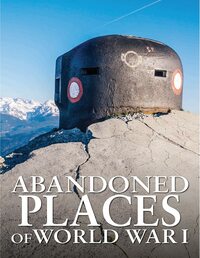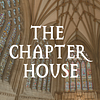Take a photo of a barcode or cover
This is a beautiful and haunting coffee table book of abandoned WWI relics. The book features large full-color pictures showing the various locations. It is divided by location with sections like France, Belgium, U.K., Central Europe Eastern Europe, Balkans Africa and Middle East, and North America and the Pacific. I appreciate that the book acknowledges the affect that the war had outside of Europe as most people tend to overlook this. My favorite pictures were the aerial shots showing the physical scars of the war on the land. They reminded me of being in Normandy and being deeply impacted by the bomb divots left during WWII. This book would make a great gift to any WWI buff.
Abandoned Places of World War I provides a poignant, evocative and compelling glimpse into the tunnels, bunkers, fortresses and trenches built before and during the Great War. Some are (partial) reconstructions which can be visited. The chapters are divided into regions with photographic and written details including barbed wire, iron crosses, railroads, carvings, graffiti and lookouts. The reader is taken into the sites and shown personal etchings, writings and sometimes skeletal remains of those who fought each other, famine, disease and cold. Grim would not even begin to describe life then, especially as the battles were often senseless and contributed nothing but misery for hundreds of millions.
This book details fierce battles fought in Belgium, France, Italy, UK, Slovenia, Greece, Turkey, Israel and others by many nationalities including Canadians and New Zealanders from thousands of kilometers away. Natural defenses including remote mountain passes were utilized, such as the Dolomites. Fortresses built earlier in North America were re-purposed during WWI.
Reading statistics is simultaneously fascinating and sobering. I learned that more than two thirds of the casualties of WWI died by artillery. Knowledge of industrialized weaponry increased as the war raged. I've been reading a lot about the Schlieffen Plan which is mentioned here. Comparing and contrasting British and German bunkers is interesting. The entire book is!
On our travels, my husband and I seek out and war bunkers, tunnels and fortresses to photograph and explore if possible. They are often situated incongruously in great natural beauty which seems so far removed from the horrors of the past. The photographs here are truly stunning and moving and grabbed me immediately. I am grateful that important places such as those described are preserved.
History readers ought to immerse themselves in this haunting book.
My sincere thank you to Amber Books Ltd. and NetGalley for the privilege of reading this remarkably thought-provoking book.
This book details fierce battles fought in Belgium, France, Italy, UK, Slovenia, Greece, Turkey, Israel and others by many nationalities including Canadians and New Zealanders from thousands of kilometers away. Natural defenses including remote mountain passes were utilized, such as the Dolomites. Fortresses built earlier in North America were re-purposed during WWI.
Reading statistics is simultaneously fascinating and sobering. I learned that more than two thirds of the casualties of WWI died by artillery. Knowledge of industrialized weaponry increased as the war raged. I've been reading a lot about the Schlieffen Plan which is mentioned here. Comparing and contrasting British and German bunkers is interesting. The entire book is!
On our travels, my husband and I seek out and war bunkers, tunnels and fortresses to photograph and explore if possible. They are often situated incongruously in great natural beauty which seems so far removed from the horrors of the past. The photographs here are truly stunning and moving and grabbed me immediately. I am grateful that important places such as those described are preserved.
History readers ought to immerse themselves in this haunting book.
My sincere thank you to Amber Books Ltd. and NetGalley for the privilege of reading this remarkably thought-provoking book.
informative
sad
fast-paced
Abandoned places of the First World War, around the world. It is a beautiful coffee table book, filled with wonderful photographs and informative text. A Perfect gift. Enjoy
This is an incredible book! High-res photographs from around the world bring unique insight into WWI; it was truly fascinating, seeing how remnants of the war live on to this day and have been reconstructed/maintained or left to the natural elements. Comparing how each country fought, defended itself, and worked to heal its soldiers proved insightful, poignant, and somber.
I read this at about the same time as Kate Breslin's _As Dawn Breaks_, also set during WWI; that lent gravitas and quite the mental picture for her novel. It also reminded me of many a childhood day trip up to Fort Casey on Whidbey Island, one of three strategic fortifications at Puget Sound's entrance that saw most of its activity during WWI and WWII. Of course, as a child, grasping the magnitude of events that happened at that time is naturally a challenge! So revisiting in this book revived the magnitude of history and set my own memories in the context of world events.
The emphasis within the book is more on the pictures, with captions providing "history in a nutshell." For me, that was perfect and just enough information to whet the appetite, should I want to pursue other reads for more detail.
I think my favorite pictures were of Chapelle des Chasseurs Alpins (in Confrecourt, Aisne); I love to visit (and photograph) chapels and churches when I travel, and these photos stirred all the feels--especially since travel isn't quite the same right now (as I write this mid-pandemic). A picture of a German gun in Belleau Wood, Aisne, was also particularly powerful: set smack dab in the middle of a forest, with more leaves on the ground than on the trees, it literally paints a jarring image of war's devastation. And finally, the ossuary at Haute Chevauchee (Argonne, Meuse) was perhaps the ultimate tomb of unknown solders. Again ... sobering and moving.
5/5 stars.
I received an eARC of the book from the publisher via NetGalley. All opinions are my own.
I read this at about the same time as Kate Breslin's _As Dawn Breaks_, also set during WWI; that lent gravitas and quite the mental picture for her novel. It also reminded me of many a childhood day trip up to Fort Casey on Whidbey Island, one of three strategic fortifications at Puget Sound's entrance that saw most of its activity during WWI and WWII. Of course, as a child, grasping the magnitude of events that happened at that time is naturally a challenge! So revisiting in this book revived the magnitude of history and set my own memories in the context of world events.
The emphasis within the book is more on the pictures, with captions providing "history in a nutshell." For me, that was perfect and just enough information to whet the appetite, should I want to pursue other reads for more detail.
I think my favorite pictures were of Chapelle des Chasseurs Alpins (in Confrecourt, Aisne); I love to visit (and photograph) chapels and churches when I travel, and these photos stirred all the feels--especially since travel isn't quite the same right now (as I write this mid-pandemic). A picture of a German gun in Belleau Wood, Aisne, was also particularly powerful: set smack dab in the middle of a forest, with more leaves on the ground than on the trees, it literally paints a jarring image of war's devastation. And finally, the ossuary at Haute Chevauchee (Argonne, Meuse) was perhaps the ultimate tomb of unknown solders. Again ... sobering and moving.
5/5 stars.
I received an eARC of the book from the publisher via NetGalley. All opinions are my own.
This book has rich colorful photographs of the long-forgotten landmarks of WWI. Sharing this book with a class would be a great way to bring history to life. I enjoyed this book immensely.
This arc was provided to me for free for an honest review.
This arc was provided to me for free for an honest review.
adventurous
informative
medium-paced
This was a very enjoyable coffee table book of over 150 photographs from around the world. I enjoyed reading about the different places that been destroyed by the Great War and sometimes the stories of the regiments who’ve left their personal marks behind. Although I knew that WW1 had been fought all over Europe, I hadn’t really thought about the bunkers and forts that could still be found outside of the Western Front in France and Belgium.would be found. The photographs are good quality and I definitely recommend this to anyone with an interest in battlefields of the First World War.
Thanks to Amber Books and NetGalley for my digital copy.
Thanks to Amber Books and NetGalley for my digital copy.
I really enjoyed reading this book. I loved the pictures and could feel emotions when looking at them. Some where so powerful. I learnt so much from reading this book. I loved the way this book was split into different countries that way you could see the similarities in the style of the structures and by the end of the book I would be able to tell you which country one of the structures is from. I enjoyed the variety of photography styles including Aries photos and I loved the ones from under the sea. My favourite photo was of an abandoned war ship in Australia that a small forest grew from. I especially loved the section covering war art it was totally amazing looking at these pictures. The reason this book was a 4 star and not a 5 is i would of loved to see some pictures cropped, some different angles to the more interesting building and more informative writing about these amazing places. Or is that just me being picky. I see this book on many history fans coffee tables.
Many thanks to the author and publishing team for creating a book that brings history to life.
Many thanks to the author and publishing team for creating a book that brings history to life.
This book provides a look at the remnants of the first World War using photography. Through its high resolution full page pictures and descriptions this book tries to connect the reader with both the history of the war and the aftermath we are left with. As most of those who managed to survive the war have grown old and passed on these abandon places are the only reminders we have left that the war really existed. Yes, we have historians and teachers to pass along the stories of the war, but it is oftentimes the physical evidence that closes the gap from a cold detachment and a startling realization of existence.



